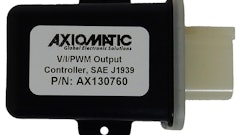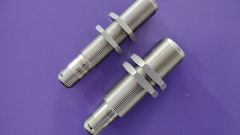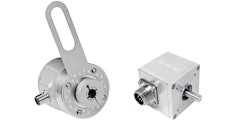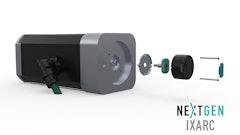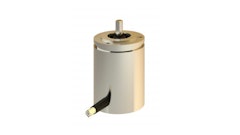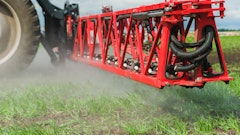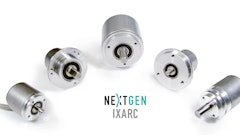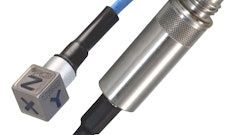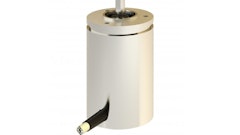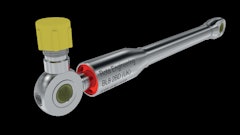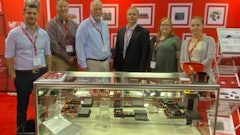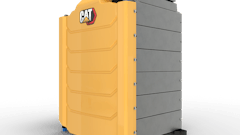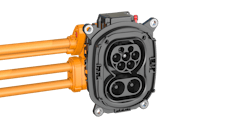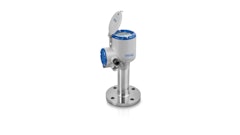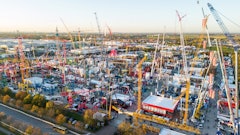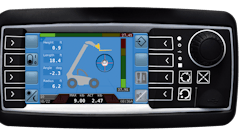
Heavy-duty pressure transducers are a type of device often used in transportation applications to maintain heavy equipment performance by monitoring system pressure, fluid power, fluid flow and fluid levels in such key systems as pneumatics, light hydraulics, brake pressure, engine oil pressure, transmission, and truck and trailer air braking.
Today’s designers are responsible for creating complex control systems that rely on greater feedback than systems could provide in the past. As a result, they often rely on these types of devices for a high degree of accuracy, cost-effectiveness and ease of implementation.
Simply put, a heavy-duty pressure transducer is a pressure measuring device that features a housing, metal pressure ports and high level output. Many have a round metal or plastic housing and tubular construction with a pressure port on one end and cable or connector on the other. These heavy-duty workhorses are often used in temperature extremes and where environmental electromagnetic interference (EMI) abounds. Industrial transportation customers design them into systems to monitor and measure the pressure or flow of liquids such as coolants or oils. They can also detect pressure spikes in real time, finding such problems as clogged systems so that solutions can be immediate.
There are a wide range of possible solutions for heavy duty applications. First, however, what constitutes heavy-duty? Environments representing a wide temperature range, for example between -40 to 125 C (-40 to 257 F), and environments where a variety of harsh media such as refrigerants, engine oil, brake fluids, hydraulic fluids and compressed air are used. While these temperatures and harsh environments are not necessarily the most extreme, they represent the bulk of conditions in transportation and industrial environments.
How to select the right transducer
The number of transducers available is nearly endless, making it important to carefully compare specifications. The transducer should be analyzed for reliability, calibration, offset compensation, sensitivity, and total error band.
When selecting transducers for your industrial/transportation application, consider:
1) Configurability
With each transducer, what does the device feature in regards to standard or custom connectors, ports, pressure reference types, ranges and output options? Can exact design requirements be met easily and rapidly either off-the-shelf or with configurability assistance? Can you design the device you need and receive samples rapidly so that time-to-market is not slowed or affected?
2) Total Error Band
Total Error Band (TEB) (see Figure 1) is a comprehensive, clear and meaningful measurement. It provides the true accuracy of the device over a compensated temperature range. When the TEB is established at ±2%, for example, no matter where the temperature is within the established range, or whether pressure increases or decreases, the error will be within 2% of the established value.
Often manufacturers do not list TEB in their product data sheets. Instead, errors are listed individually. When added up, the total error (or what would be TEB) can be significant. TEB can be one of the most compelling aspects of selecting a transducer.
3) Quality and performance
What are the performance standards to be met? In many cases, transducers are produced to One- or Two-Sigma tolerances. When a transducer is produced to meet Six-Sigma standards, however, the device combines high quality and high performance and consistency, and the resulting confidence that the transducer will perform to spec.
4) Other considerations
Additional checklist items for heavy-duty transducer selection include:
- Transducers should be compensated, calibrated, amplified and finished—additional resources should not be required to “make it fit.”
- Custom calibration, or custom calibration with custom outputs, should be available with a variety of regulated output voltages to meet the specifications of the design without design modification.
- CE compliance, IP rating, long mean time to failure and an EMC (electromagnetic compatibility) rating provide for durability in harsh environments.
- A broad compensated temperature range allows the same device to be used throughout the system design, as well as designed into a broad range of applications.
- A variety of connectors and ports allows the transducer to meet a variety of application needs.
- Consider flexibility in device placement based on the transducer’s small footprint.
- The transducer should meet applicable industry standards, such as ISO 9001.
- The total cost of the transducer should be considered, which includes integration, configurability and implementation.
Another major consideration is design and application support. What resources are available for the design engineer to help answer important questions during the design, development, launch and production phases? Does the manufacturer provide sufficient global presence and product support to assist from design to manufacturing?
The Honeywell PX2 Series Heavy-Duty Pressure Transducer is a recently introduced line of highly configurable pressure transducers designed for use in a wide range of heavy equipment and alternative fuel vehicles. Based on piezoresistive-sensing technology with Application Specific Integrated Circuit (ASIC) signal conditioning, they meet the criteria for use in harsh environments. Fully calibrated and compensated for transducer offset, sensitivity, temperature effects and non-linearity, they feature a TEB of ±2% over the operation temperature range of -40 to 125 C (-40 to 257 F).
By using an in-depth checklist to select heavy-duty pressure transducers, designers can make rapid and sound decisions based on true and verifiable data. While the level of accuracy available in today’s transducers is light years ahead of products on the market just a few years ago, it is important that designers select a product that fits without modification and that is ready to go as rapidly as possible.
About the Author
AJ Smith is Director of Product Marketing at Honeywell Sensing and Control, and can be reached at [email protected].



